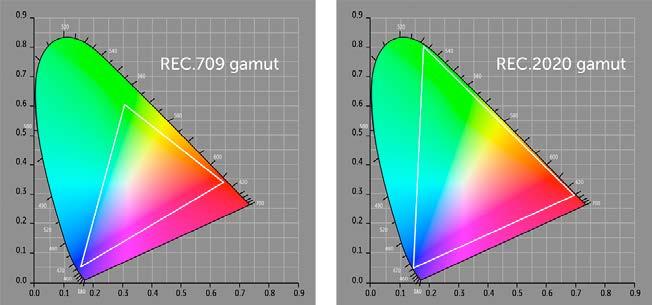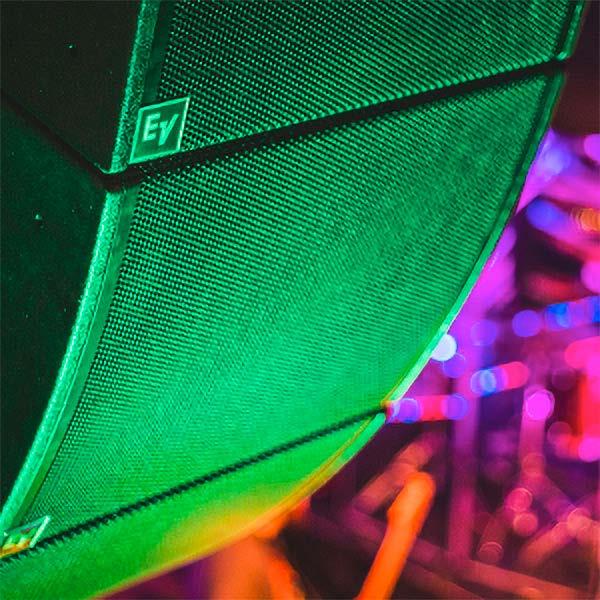
5 minute read
What's the Difference
What’s the Difference Between Laser Phosphor and RGB Laser?
by Barco
Advertisement
So you’ve decided to upgrade your fleet with new laser projectors? Great! Now the next step is choosing between the different laser technologies: RGB and laser phosphor. Let’s shed some light on the differences between these two laser solutions. And, perhaps the number one reason why you’re reading this, let’s find out which one fits your needs.
Laser phosphor vs. RGB laser: how does it work?
The light source in an RGB projector, also called direct laser projectors, contains individual red, green and blue lasers. As we’ve all learned in kindergarten, these primary colors are the building blocks of all other colors. By combining different proportions of these three lasers, the projector can reproduce millions of different shades and hues. The laser output is mixed, processed by the projector’s DMD (Digital Micromirror Device) chips and directed through the lens on the projection canvas. However, instead of using three different colors, the laser phosphor projectors use just one. The majority go for only blue laser diodes. “Why blue?”, you might ask. Well, the choice for blue lasers is partly cost-driven, but also based on the high density and power efficiency of this color. The blue light from the laser shines onto a spinning yellow phosphor wheel. The chemical compound phosphor absorbs the blue light, and radiates a bright, yellow light. This broadband yellow light is captured and split into the primaries using a color wheel. These can then be used to produce the colored images on the canvas.
What are the main differences?
Colors – By design, RGB is a wide color RGB projectors contain individual red, green and blue lasers. Laser phosphor projectors use just one blue laser. It shines on a yellow, spinning phosphor wheel, which is then projected through a color wheel, creating color images.
gamut light source. RGB projectors can go to the theoretical single bandwidth gamut called Rec. 2020, which is currently the widest color space available. The RGB pure laser beams are close to monochromatic. It means that these beams are associated with points at the border of the color space diagram. All the colors which lie in the triangle spanned by the corresponding points can be reproduced. For comparison, the accessible color range for a laser phosphor projector is a triangle with the edges lying well inside the diagram (e.g. Rec. 709).
But don’t forget: if you want your projector to show Rec. 2020 colors, you need content that’s created within the same color gamut. And for now, the production of Rec. 2020 content is still pricier. In the events sector content is still usually produced in Rec. 709 colors, so choosing the larger and more expensive RGB projectors might be overkill. Brightness – The sweet spot of laser phosphor-based projectors lies between 10,000 and 50,000 lumen. Whereas, RGBbased projectors go up to around 60,000 lumen. Barco’s XDL even goes up to a massive 75,000 lumen!
The RGB projectors are ideally suited for fixed set-ups where the extra lumens are welcome, like domes and planetariums. However, not all applications require these extreme high brightness capabilities! That’s when the laser phosphor projectors are the more efficient and cost-effective choice. And let’s be honest: 50K lumen is still a lot of brightness! Size – Because of its extreme highbrightness capabilities, the RGB projectors require a well-designed cooling system. The primary lasers need more cooling to keep them efficient and stable in wavelength. In addition, the red laser wavelengths are warming up the DMD chip more than the continuous spectrum of laser phosphor light sources, so the DMD also needs more cooling. Hence, it doesn’t much good for the size of RGB projector models. Their saturated color reproduction and outstanding 3D capabilities make the RGB projectors dominant in the cinema sector where the size of the projector is not of key importance. Movie theaters typically have a separate room - the projection booth - where the projector, and other machinery, is installed and where it will most likely stay during its lifetime. For the rental and staging industry, where size and flexibility are decisive elements, the laser phosphor projectors are the perfect fit. Their more compact and lighter design, thanks to the smaller cooling system, allows for easy stacking and facilitates quick and easy transport from one event to the other.
Choose your laser
It’s clear that both technologies have their strengths and benefits serving different market segments. It’s just a matter of choosing the right laser for your needs.
An Immersive Experience
by legrand AV/Da-Lite
New Life Church in Dublin, California, was looking for a modern, immersive video experience for parishioners. To accomplish this, New Life turned to One Way Media Solutions, a full-service audio, video, projection and surveillance systems integrator. Together they developed a solution that included environmental projection, side projection, confidence projection, and virtual pastor technology. • Da-Lite Series 200 Lace and Grommet frame • 3 Da-Lite Perm Wall Screens with Da-
Mat surface
To create a captivating experience, One Way Media Solutions used custom environmental edge blending on the
Da-Lite screens were an important part of the project. In total, the team used:
• Wireline Advantage Screen with HD Progressive 1.1
Surface • Large Cosmopolitan Electrol
Screen screens. They appreciated the quality of Da-Lite products and especially liked the custom control of Wireline Advantage which included two different stops. “The goals of the project were met in a tricky mounting scenario,” said Masaki Liu, president of One Way Media. “The Wireline provided the modern look and feel without an obstructive leader for the virtual pastor scenario.”
Tim Shinners, Regional Sales Manager for Da-Lite said, “I was impressed by the engineering resourcefulness of One Way Media to create this cool, visual worship experience that was also functional. It was a great example of utilizing Da-Lite technology to meet the needs of the church.”












